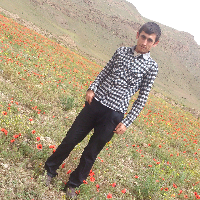Land allocation and scenarios for strategic agricultural products in rural areas Case study: Urmia city
According to the climate change and the water crisis on the one hand and population growth and crop demand on the other, land allocation for agricultural activities is the most important issue. Understanding the quantity, quality, type, distribution and allocation of land based on demand and supply are important requirements. The growing global population, coupled with demand for new products such as biofuels, and pressure on agricultural land. Managers decisions and goals. Multipurpose hybrid optimization is one of the most important factors in land allocation that makes land allocation difficult. The goal of research identified prioritize and recognize land allocation scenarios for strategic products for food security based on natural capacities and socio-economic and social conditions in Urmia city. The method of in this research is descriptive-analytic and information collecting is documentary and field. Research indicators include population growth, national and global per capita, national and global efficiency .The results show, the worst scenarios for land allocation (scenarios one, two, five and six) are because of food security issues in the country, critical water conditions, and high per capita consumption, per capita scenarios and national efficiencies. The third, fourth, seventh and eighth scenarios of the optimal scenario, and the ninth and tenth scenarios of the medium scenario and the eleventh and twelfth scenarios to be the most desirable scenarios are considered. The decline in growth rates in the last few years has led to the region's best growth due to population growth problems, so the eleventh scenario will be the best scenario according to the short-term growth rate and per capita and global efficiency. This research for responding to agrarian issues, water and population of the region is unmatched by using a combination of indicators and compiling land allocation scenarios.Extended AbstractIntroductionLand use allocation is a competitive process by managers and decision makers for achieving the goals set. The growing global population, coupled with demand for new crops such as biofuels and the push to farmland by managers' decisions and goals, are multi-tasking hybrid optimizers that are important factors in land allocation. Therefore, proper decision making in the process of user allocation in the agricultural sector is very important. There are various methods to solve this complex optimization problem, including mathematical programming and heuristic optimization methods. Urmia city is one of the cities in the country that has good climatic and natural conditions for agricultural activities and also the border city has doubled its benefits. Therefore, with proper land allocation, conditions can be provided for exporting the product. Meanwhile, some crops are strategic because of the increasing importance in the country and even the world. According to the region's agricultural conditions, such strategic products such as grapes, apples, potatoes, tomatoes, wheat, barley, peas and beans, can be to prioritize. Therefore, the present study seeks to prioritize land allocation for strategic crops to provide food security based on the natural capacities and economic and social conditions of this city in order to identify the main priorities and amount of cultivation of each strategic crop. Various global, national, and local indicators are considered for this process. MethodologyThe research method in this study is descriptive-analytical. The data collection was based on documentary data. GIS software was used to measure land capacity and Excel was used for scenario building. Scenarios used were national, global, per capita consumption indices, regional and national production efficiency, and population growth index (50-year growth rate from 1967 to 2017 and 10-year rate from 2006 to 2016).In the scenario, if (Pn) is the end-of-period population and (Pa) is the beginning of the period and (n) is the forecast year, then the population growth rate (r) will be: The population prediction for a specific time horizon based on the growth rate is obtained from the following relationship: Where r is the population growth rate and t is the period of time (here ten years). And if the value of the land is (Lh) and the population is represented by (p) then the per capita land (LP) will be: And if the production value of (P) is obtained from the value of (Lh) then the production efficiency (PE) will be: And if the population in the coming years (Pt) is specified and the per capita consumption over a year is determined for national products (PcNC) in kilograms, the national per capita consumption for that year (PCt) for different products with The tone scale will be equal to: 5) PC = Pt* PcNC / 1000And according to the per capita consumption and global consumption (PcGC) the amount of consumption will be equal to:* PcGC / 1000Then, the scenario building relationship will be equal to: Results and discussion, In this regard: LASP: Allocation Scenario, Pt: Crop Value per Year, Pn: Population Year n based on Long and Short Term Population Growth r, PcCn (g) per capita global and national consumption (calculated separately), and PEn (g) National and global production efficiency for each product (calculated separately). Results and discussionBased on the studied indices, 12 scenarios were obtained for land allocation to different crops. A comparative comparison of the 12 scenarios shows that the current situation (water crisis, climate change, soil and water pollution) and its continuation do not seem to be favorable for the region. This is due to the high per capita consumption of crops such as grapes and wheat and the low efficiency of horticultural products on the one hand and population growth and increasing demand on the other. Therefore, given the country's food security, dire water conditions, and high per capita consumption, scenarios related to per capita and national and local efficiencies are the worst-case scenario (scenarios one, two, five, and six). Scenarios three, four, seven and eight are considered for global consumption, but low national and local efficiency has made the scenario moderate. And, alternatively, scenarios nine and ten are considered to be the average scenario (despite global efficiency) due to the high national per capita consumption. Scenarios eleven and twelve are the most desirable scenarios because of the global average. Conclusion In this research, the importance of land allocation for agricultural activities has been identified, but no research has been conducted on crops and their allocation. But the present study, in addition to explaining the importance of land allocation, has determined how much land is allocated to each crop. scenarios one, two, five, and six are the worst possible scenarios according to given the country's food security issues, dire water conditions, and high per capita consumption, scenarios related to per capita and national and local efficiencies. Scenarios eleven and twelve are the most desirable scenarios because of the global average. Given that the growth rate of the country has been very volatile in the last 50 years, so it is a bit high and low (probability scenario). The slowdown in growth over the last few years due to population growth problems has made the region's growth rate at its best, so the eleven-scenario scenario with short-term growth rates and per capita global yield will be the best-case scenario. With this scenario will yield world-class crop yields, and in some cases, such as wheat, given the high potential of the region, even higher global yields can be achieved. Given these interpretations, research into this scenario will meet both regional needs and export surpluses to neighboring countries such as Turkey.
- حق عضویت دریافتی صرف حمایت از نشریات عضو و نگهداری، تکمیل و توسعه مگیران میشود.
- پرداخت حق اشتراک و دانلود مقالات اجازه بازنشر آن در سایر رسانههای چاپی و دیجیتال را به کاربر نمیدهد.



